Advancements in Linear LED Lighting Technology
As we step into 2023, the world of lighting technology is poised for further breakthroughs, particularly in the realm of linear LED lighting. These advancements are set to encompass various aspects, enhancing both functionality and aesthetics.
Innovations in Color Rendering and Tunable White:
The evolution of linear LED lighting is expected to bring about significant improvements in areas like color rendering and tunable white lighting. These developments aim to closely replicate the natural shifts in light intensity and color temperature throughout the day, offering cooler, bluer hues in the morning and warmer, redder tones in the evening. The focus is not just on illumination but also on promoting the well-being of individuals within the lit environment.
Integration with Building Systems:
The future of linear LED lighting lies in its seamless integration with other building systems. This includes sophisticated lighting control systems, building management systems, and the Internet of Things (IoT). The objective is to enhance energy efficiency and the overall user experience. These integrated systems will allow for dynamic adjustments and intelligent responses to the changing needs of the space and its occupants.

Aesthetic Versatility:
Linear LED lighting is becoming increasingly versatile in terms of design. Expect to find a broader range of designs, shapes, profiles, and finishes, catering to the diverse requirements of commercial spaces. Whether you’re aiming for a modern, minimalist look or a more intricate and decorative style, there will be linear LED lighting solutions to suit your needs.
Enhanced Functionality:
The functionality of linear LED lighting is also on an upward trajectory. Features like adjustable color temperature and dimming capabilities will become more common. These improvements not only bolster energy efficiency but also contribute to the well-being of those utilizing the space. Tailoring the lighting to specific requirements will be more accessible and intuitive than ever.
Modular Lighting Systems:
In 2023, modular lighting systems will shine as an innovative alternative to traditional setups. These systems offer several advantages, including high customizability. Users can create unique lighting arrangements that align precisely with their needs. Installation and maintenance are simplified, as individual modules can be swapped out or replaced as necessary, aligning with the principles of the circular economy. Furthermore, these systems tend to be more energy-efficient, as users can adjust the number of modules to optimize their lighting output for specific purposes.

In summary, the commercial linear LED lighting trend for 2023 revolves around a quest for energy efficiency, versatility, and visually appealing lighting systems that seamlessly integrate with other building systems and technologies. These advancements aim to improve not only the quality of illumination but also the overall experience of the spaces they light.





